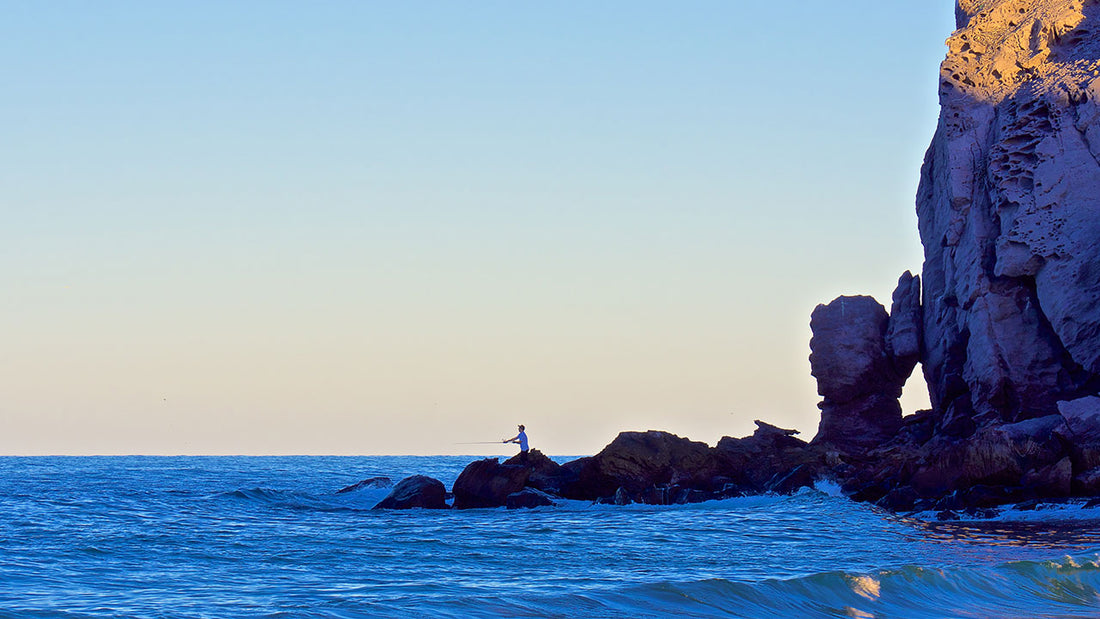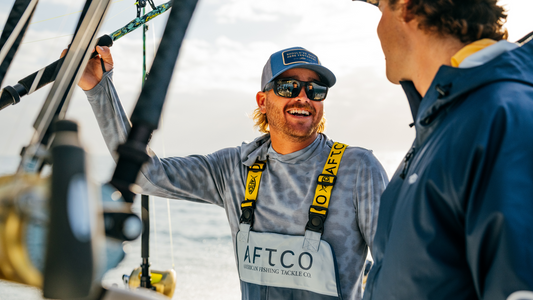
30x30 Overview: Historic Battle or Historic Opportunity Ahead for Fishing Community?
Recreational anglers in the U.S. have a long history of having to fight for fair and equitable treatment at the hands of legislators and fishery managers (particularly at the federal level). A new environmental initiative could change that for the better, or it could mean the recreational fishing community’s biggest battle ever.

A national imperative to “conserve 30 percent of America’s lands and oceans by 2030” is a major objective within a Biden Administration executive order issued January 27, 2021. A push for such a strategy has been ongoing and growing in recent years: In 2018, Swiss philanthropist Hansjörg Wyss pledged a billion dollars (yes, with a “B”) to reach that 30-percent goal. The clarion call to quickly begin setting aside 30 percent of our lands and waters has garnered widespread support among many environmental interests.
Is 30X30 a Bad Thing?
And really, could anyone not be all in for the goal of saving our natural world from rampaging degradation and the disaster of climate change? Most reasonable Americans of any stripe can agree with that goal — certainly anglers who pride themselves on a long history as conservationists and stewardship over the waters they fish.
But the means to how we achieve that end could be a whole different story. We can all like the destination but may not agree on which path best gets us there. In other words: as is so often the case, the devil is indeed in the details. And the fact is, there just aren’t any details yet. That could be reason for concern — a sword of Damocles hanging over recreational fishing in this country. Or it could actually be a reason for some rejoicing for what could become a plus for recreational fishing.
For now, the recreational-fishing community should remain hopeful but aware and vigilant.

Wording in Section 216 in the (much larger) Biden executive order, “Conserving Our Nation’s Lands and Waters,” is vague and general, and apparently strategically so, in order to engender input and allow time for planning. But it does acknowledge the goal of “conserving at least 30 percent of our lands and waters by 2030.” Hence the now-ubiquitous “30x30” moniker.
In this section, Biden calls for secretaries of Interior, Agriculture and Commerce (which governs NOAA/NMFS) and the chair of the Council on Environmental Quality to submit a report within 90 days (of January 27) to the newly formed National Climate Task Force to recommend the steps that will make 30x30 goals happen.
Presumably by then, the most fundamental terms, such as what exactly defines “conserving” our lands and waters, will be clear, and then what will be done to achieve that goal?
Until we see those devilish details, you bet sport fishermen are antsy, and with good reason. We’ve been burned, often and repeatedly, and over decades of being taken for granted, have had to fight for recognition of our numbers, our passion and our economic importance. Now the recreational fishing community wonders if once again we’ll be thrown under that big green bus, lumped in with industrial fishing operations, mining interests, polluters, corrupt developers and so on.
Historic Opportunity?
But as noted above, this time our fears could prove to be our opportunity. In Section 216, the President’s wording specifically and in more than one spot, mentions 30x30 strategies to be developed with the input of “fishermen, and other key stakeholders.” Hopefully, “fishermen” means just that — whether commercial or recreational. Bottom line: This time around, we can be optimistic that the recreational-fishing community will have a prime seat at the table. Or put another way, this time around we can hope that environmental groups and government agencies will accept anglers as part of the solution, and not part of the problem.
And that’s as it should be. Increasingly in recent years, that recreational-fishing community has been unified, energetic and influential, aided by the weight of a (federally) estimated 50million anglers and a politically active industry. Nor has the phenomenal increase in the number of anglers and angling during the past pandemic year gone unrecognized, making fishing the number one outdoor activity in the U.S. and forcefully reiterating the tremendous importance culturally and socially of recreational fishing. There also seems to be a growing appreciation for a public being connected to outdoors, whether on a national or local scale.

What California Has Seen with 30x30
No one knows that better than anglers in California, which in fact well before the current executive order had its own 30x30 bill pass the state house, but fail in the senate. Then, in October, 2020, Gov. Gavin Newsom issued his own executive order calling for the state “to conserve at least 30 percent of California’s land and coastal waters by 2030.” Should this be on top of about 16 percent of the state’s waters already having no or limited access to anglers, nearly half the state’s waters could, conceivably, be closed to anglers. The state’s notorious Marine Life Protection Act wreaked havoc on coastal sport fisheries starting in 1999, needlessly locking anglers out of important fishing areas. Although Newsom’s order does suggest that protection should occur “in a manner that preserves biodiversity and natural resources” as it “expands equitable outdoor land and recreation for all Californians,” many still worry that the state’s new 30x30 effort could prove to be “MLPA 2.0.”
For now, groups representing our sport, including the American Sportfishing Association, the Coastal Conservation Association, the National Marine Manufacturers Association the International Game Fish Association and others, will be keeping a laser-beam focus on 30x30 developments as the nation’s anglers and recreational-fishing interests wait to see how this 30x30 effort will shake out, and see whether our input as key stakeholders is heard and considered, or whether this becomes perhaps our most challenging battle ever for the right to pursue our sport. Those group looks to an effort called Hunt Fish 30 x 30 to inform 30 x 30's role for the hunting and fishing communities. Either way, anglers remaining informed and unified offers our best hope.





